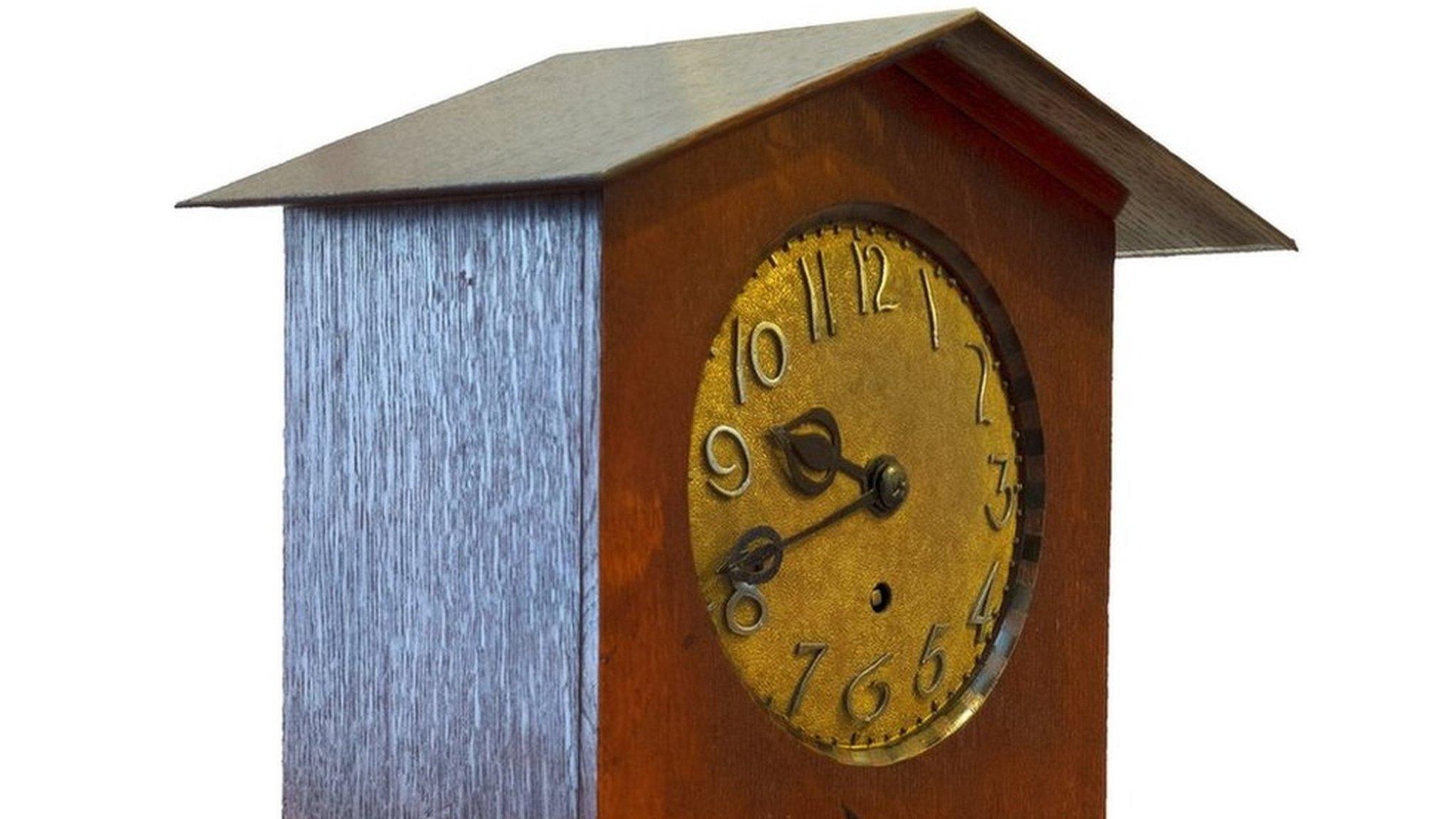Hingham church survey reveals Arts and Craft carvings
- Published
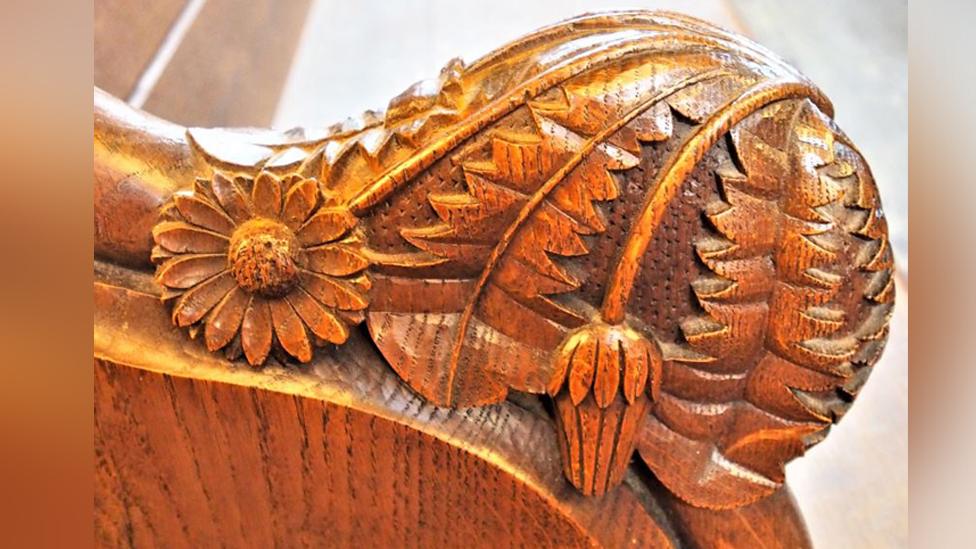
The carvings show a strong passion for Norfolk heritage, according to curate Sally Wallace-Jones
Thistles, ears of corn and fuchsia are among more than 60 plants and animals carved on Victorian wooden pews which have been surveyed for the first time.
The pews were created by James Forsyth, a Victorian sculptor who was part of the Arts and Craft movement inspired by William Morris.
Curate Sally Wallace-Jones said the carvings reflected nature around St Andrew's Church, Hingham, Norfolk.
She said she had "never seen any pews like them elsewhere".
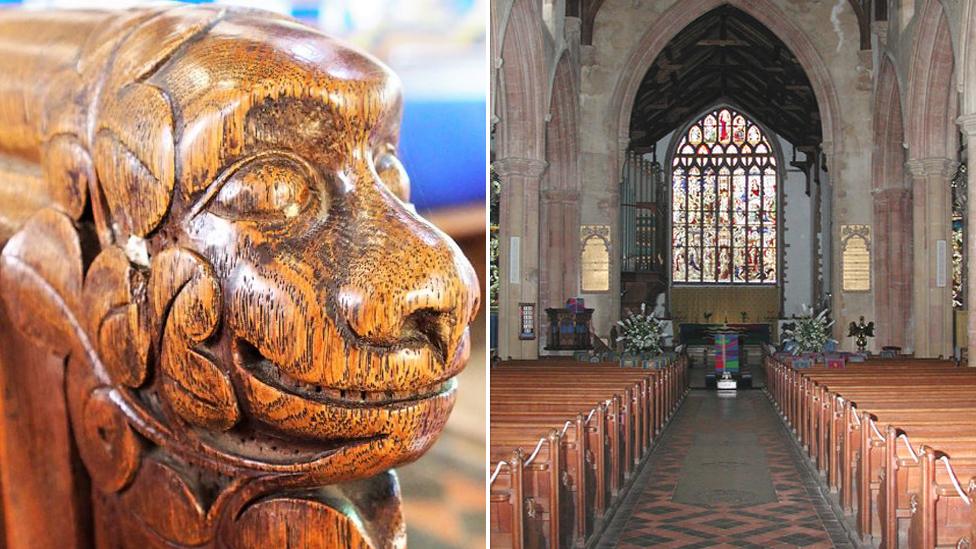
The large Grade I-listed church dates to the 14th Century and the pews are late Victorian additions
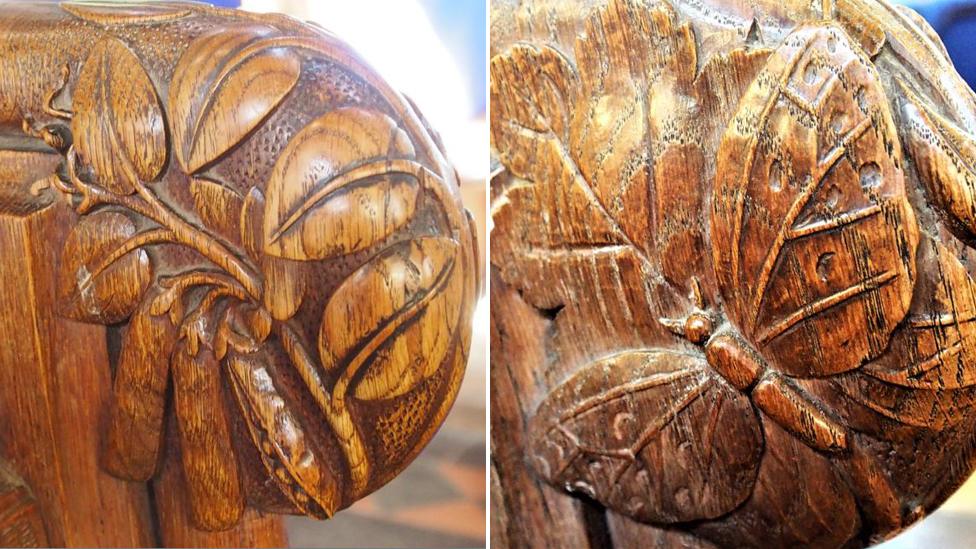
Many of the carvings were inspired by the natural world
Rev Dr Wallace-Jones catalogued all 70 pews as part of an application to the Norwich diocese consistory court, external so they can rearrange them to create space and add toilet facilities to the Grade I listed 14th Century church, external.
The wooden seats have carvings at either end and every one is different.
Dr Wallace-Jones said: "They reveal a strong passion for Norfolk heritage and I think it obvious the person who carved them knew the countryside around well.
"But there is also a snail, ridge-backed hunting dogs, dragons, an amazing fish - and a green man, which suggests Forsyth knew about the green men in Norwich Cathedral, external."
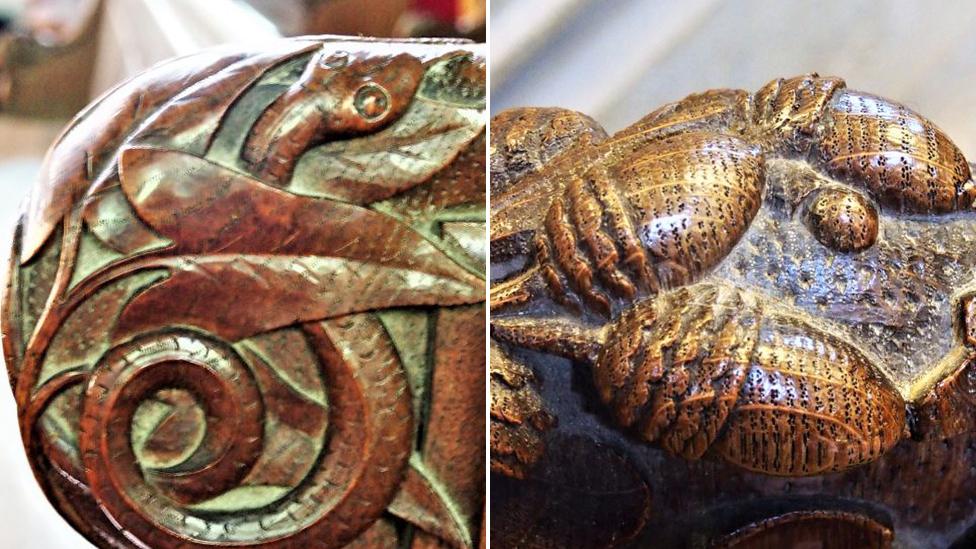
A plant and animal trail has been created so visitors can explore the carvings
The pews were installed as part of a redesign of the church between 1871 and 1872.
James Forsyth was a prolific artist who worked all over Britain creating memorials, pulpits and fonts as well as pews, external.
Dr Wallace-Jones said: "He was part of the wider Arts and Crafts movement and heavily influenced by it, having worked with Phillip Webb, who in turn worked with William Morris."
The survey revealed some of the pews were damaged and the carvings on those will be retained and preserved.
As a result of the survey, St Andrew's was granted permission to rearrange the pews.
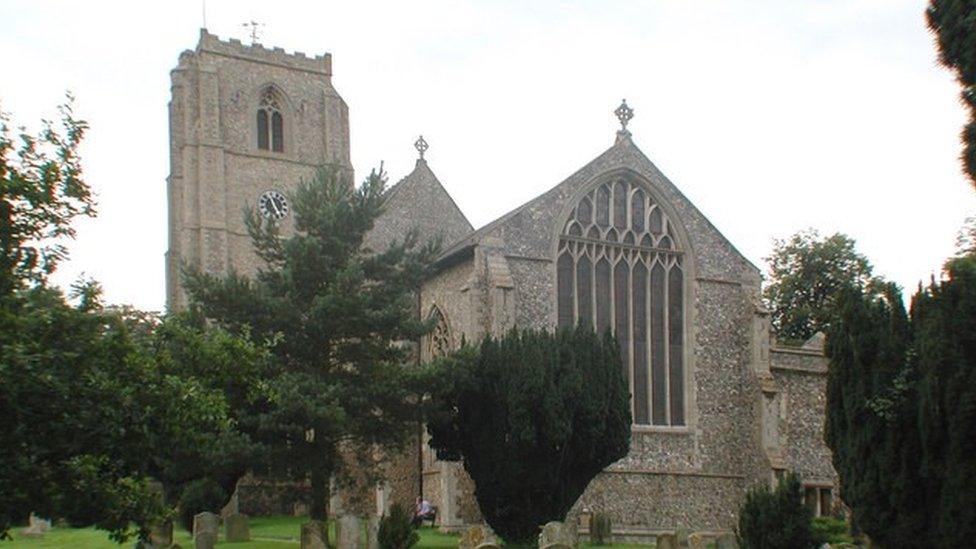
It is hoped that the removed pew ends will be incorporated into a screen in the new loo and kitchen area

Find BBC News: East of England on Facebook, external, Instagram, external and Twitter, external. If you have a story suggestion email eastofenglandnews@bbc.co.uk
- Published23 September 2020
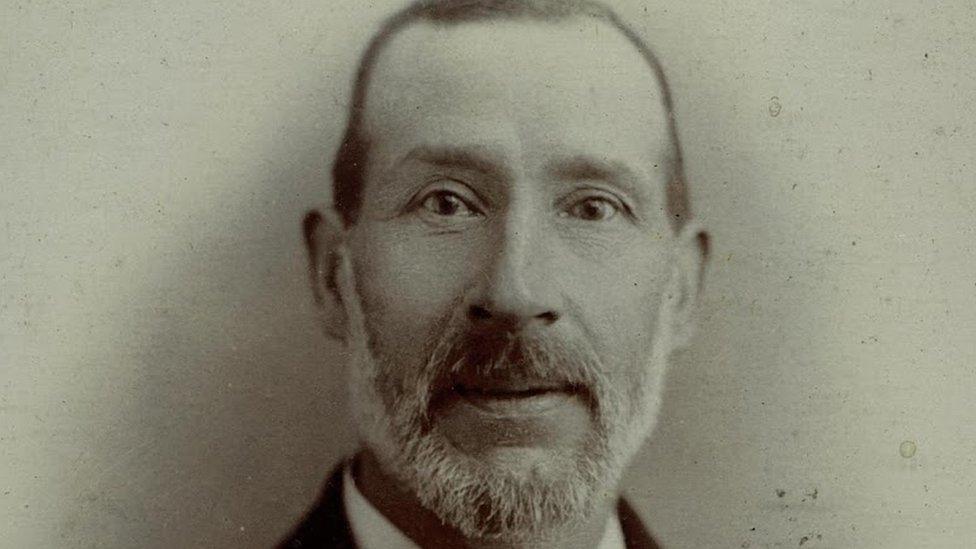
- Published6 August 2020
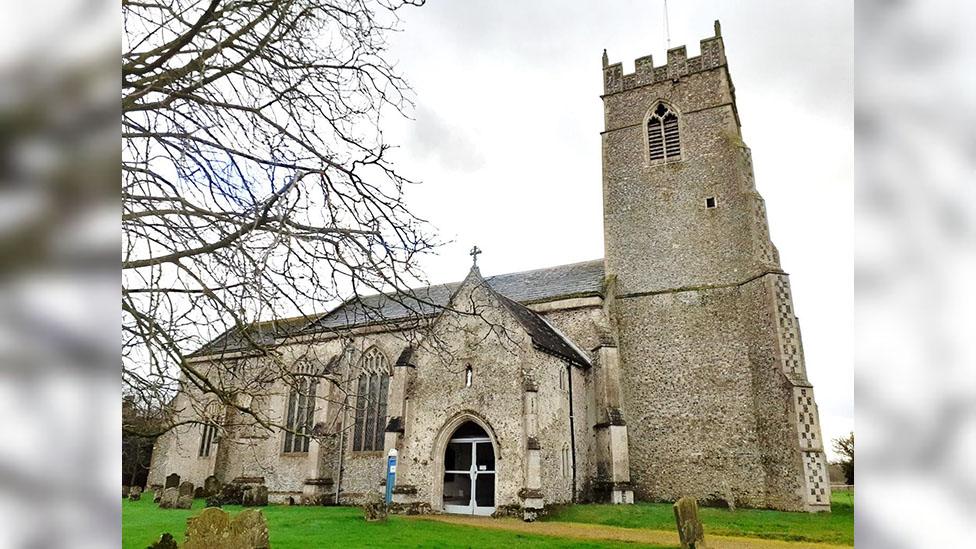
- Published5 April 2018
